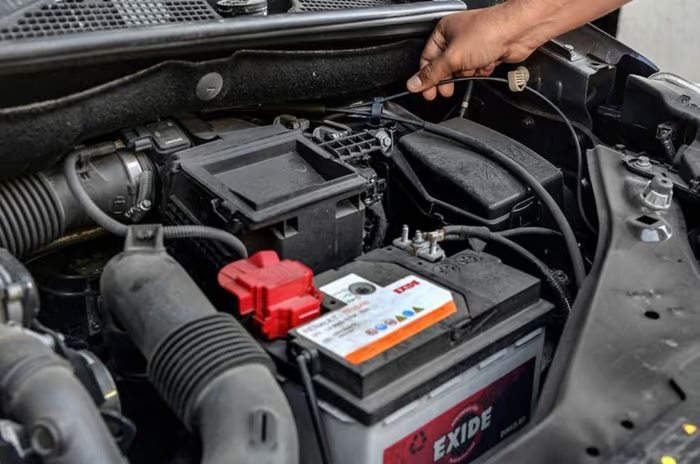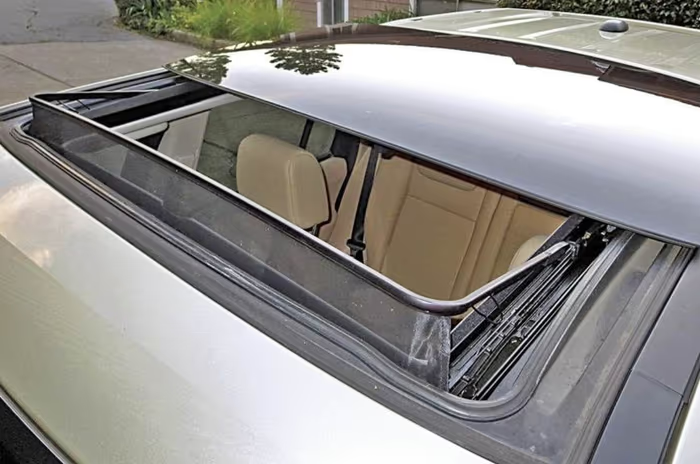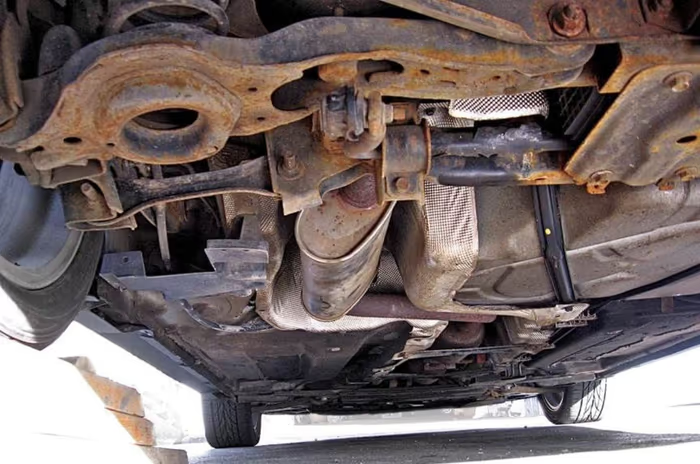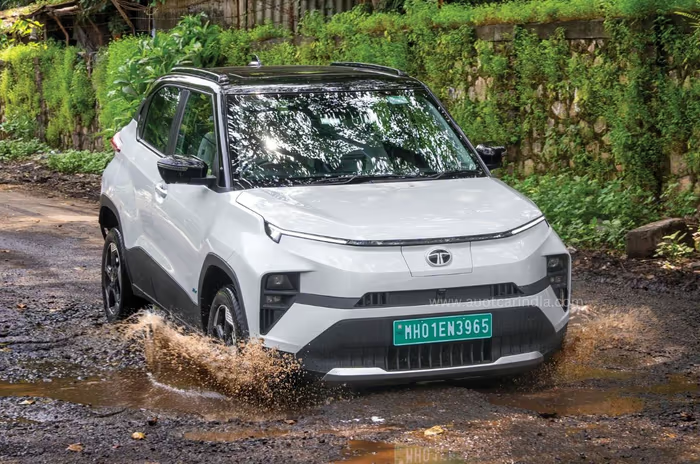The monsoons provide a welcome respite from the sweltering Indian summer, but they can be quite harsh on your vehicle. From slippery roads to potential water damage, the rainy season brings numerous hazards that can lead to breakdowns or costly repairs. Here are 10 useful tips to ensure your vehicle operates safely and efficiently during the monsoon.
1. Check tyres
Worn-out treads mean new tyres

The tyres are the only point of contact between your car and the road, so it goes without saying that it’s crucial to inspect them before heading out during the monsoon. Make sure your tyres have at least 2mm of tread depth, which can be checked using the wear indicators between the treads.
If the tread depth reaches the level of the indicator, the tyre must be replaced. A suitable tread depth will not only provide more grip on wet roads but also significantly reduce the stopping distance in instances of hard braking.
2. Test the battery and wiring
Battery must be prepared for greater usage of lights and wipers

Water and electronics don’t mix well, and modern cars contain a lot of the latter. Therefore, we recommend taking a look at your car’s battery when the monsoons roll around, especially for any exposed or frayed wires that could cause short circuits or electrical failures. It’s also worth noting that the use of wipers and lights typically increases during the monsoon, which could strain your battery if it's not in optimal condition.
3. Inspect brakes thoroughly
Brake functioning can easily be tested at home

Braking distances increase on wet roads, so your brakes need to be sharp and functioning properly. You can test them at home by starting the engine, letting it warm up, and then pressing the brake pedal. Listen for any squeaks or grinding sounds, and pay close attention to the pedal feel. If the pedal sinks further than expected, there may be a leak in the braking system. If it judders, the brake pads could be worn out. Should any of these issues arise, have your brakes inspected and replaced.
4. Replace worn wiper blades
Summers can take a toll on the wiper blades

Arguably the most helpful feature during the monsoon, wipers must be prepped for a few months of heightened usage. Check the rubber blades first, as they tend to crack from heat during the summer and are rendered ineffective when you need them during the rainy season. Wipers that leave streaks on the windshield or make squeaky noises should also be replaced. Also, don’t forget to top up the washer fluid with windshield cleaner or soapy water.
5. Ensure all lights work

During the monsoon overcast, your car’s lights are essential for both seeing and being seen. Test your headlights, tail-lamps, brake lights, fog lights, and indicators before setting off, especially when it’s dark outside. Replace any dim or flickering bulbs. Getting your headlights and tail-lights fixed or replaced, if they have moisture in them or are hazy, is another important task. Also, ensure that your headlights have an even beam, as this is crucial not only for your safety but also for that of oncoming drivers.
6. Check for leaks
Sunroof can be a major pain point

Indian car buyers love sunroofs, but these can become a weak point in your car’s armour during the monsoon. If your car has a sunroof, check for any signs of potential water entry from the rubber seals around it. The same applies to windows, doors, and footwells. Damaged seals can let rainwater seep into the cabin, causing interior damage and rust. Replace any worn seals and unclog drainage holes in the cabin floor if necessary.
7. Look out for rust and underbody damage
Anti-rust coatings are a must for the monsoons

Water and exposed metal give rise to another worrisome concoction: rust. Inspect your car’s body for any scratches, dents or paint damage, and get them fixed before the monsoon kick in to prevent rust formation. Applying an anti-rust coating will provide further protection, and it’s also recommended to clean the underbody regularly to remove mud and road grime, which can also lead to rust and wear.
8. Monsoon care tips for EV owners
Not as prone to water damage as some might believe

EV adoption is steadily growing in India, and some owners may be rightfully concerned about how their emission-free cars will handle the monsoon. Thankfully, most EV batteries are IP67-rated, which means they are built to be waterproof, but as a precaution, you should always charge your EV in a covered or dry area to prevent the possibility of water or moisture entering the charging port. Also, regularly inspect the rubber seals around the charging flap and electrical connectors to ensure they are intact and water-tight.
9. Stock spare parts and essentials
Extremely handy in emergency circumstances

If something goes wrong and help is hard to come by, keep extra fuses, bulbs, wiper blades, and a basic tool kit in the car, and ensure the spare wheel is in good condition. Additionally, pack an umbrella, a towel, a raincoat, and a change of clothes for emergencies. While these items may seem trivial, they can make a big difference if you find yourself stranded in heavy rain.
10. Get a pre-monsoon service
Can make for worry-free driving throughout the monsoon

A service before the monsoon – ideally from an authorised service centre – is one of the best ways to prevent problems. Mechanics can check every critical system of your car and spot any potential issues early. Be sure to ask for a thorough inspection, especially of the brakes, battery, wiring harness, tyres, wheel balancing, lights, fluid top-ups, and more.


























